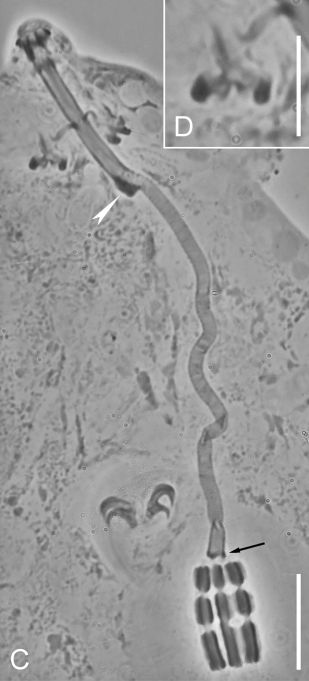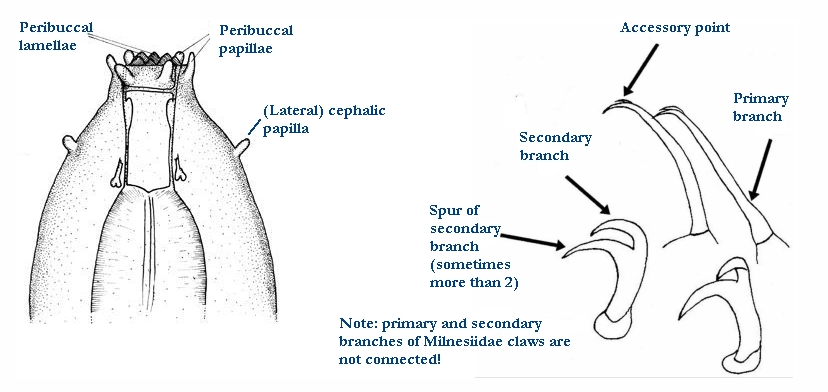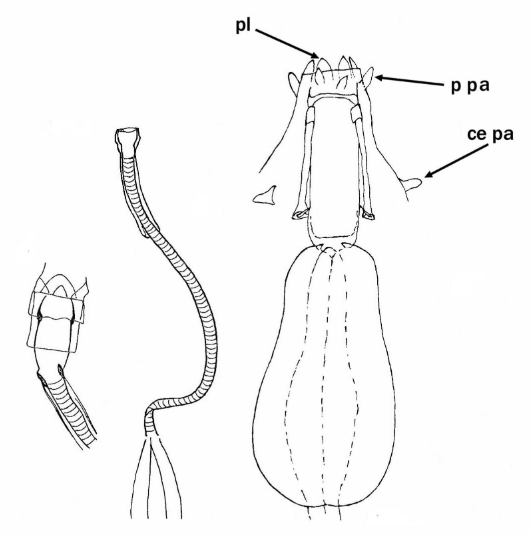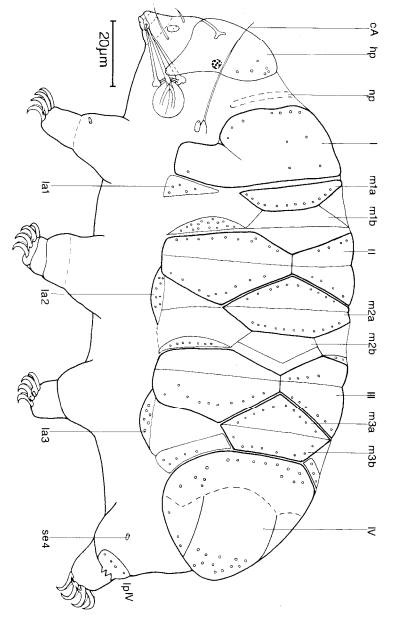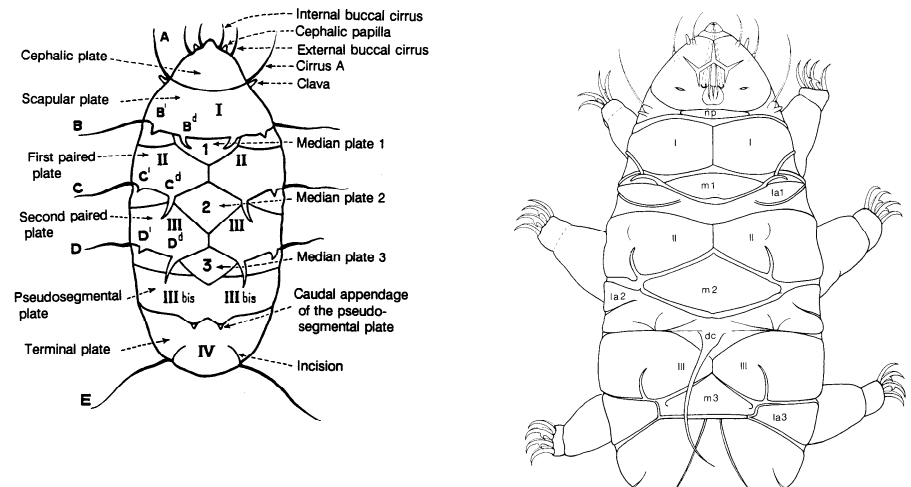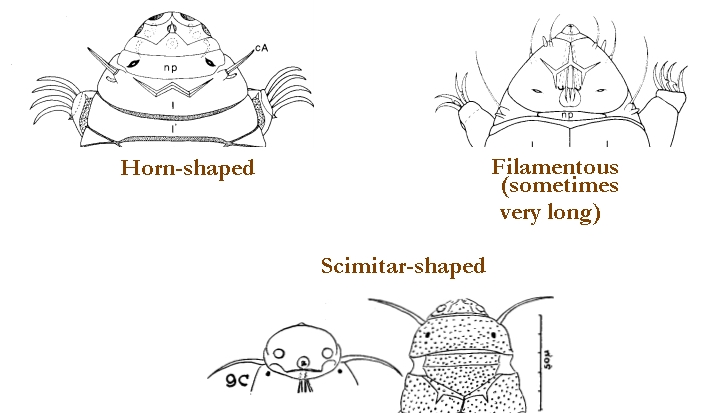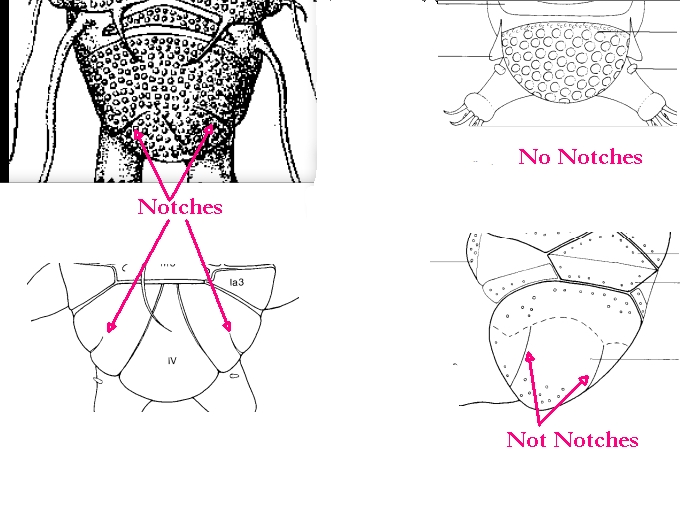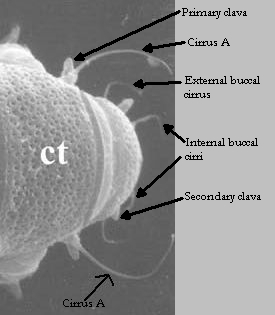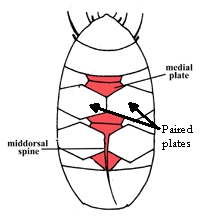Description from: Tumanov DV, Tsvetkova AY. 2023. Some have drops and some do not, but can we rely on that? Re-investigation of Diphascon tenue (Tardigrada: Eutardigrada) with discussion of the phylogeny and taxonomy of the superfamily Hypsibioidea. Zoosystematica Rossica. 32 (1): 50–74. DOI 10.31610/zsr/2023.32.1.50
“Peribuccal structures consisted of six peribuccal lobes. AISM in shape of “semilunar hooks” asymmetrical with respect to frontal plane with dorsal apophyses being distinctly higher, shorter and thicker than ventral ones, caudal processes of both apophyses pointing posteriorly and laterally. Buccal tube followed by a flexible annulated pharyngeal tube, with drop-like apodeme, bearing annulation between them. Pharynx oval with three bar-like, elongate macroplacoids. Microplacoids or septula absent. Claws of Hypsibius type. Lunules and cuticular bars on limbs absent. Eggs laid within exuviae, with numerous minute pillars-like processes on chorion surface.
Comparison. Arctodiphascon gen. nov. is most similar to Bindius (Pilato, 2009) in having an asymmetrical AISM, a long thin buccopharyngeal tube and three rodlike macroplacoids, but differs clearly from the latter in having the drop-like apodeme of the buccopharyngeal tube, which is completely absent in Bindius. Arctodiphascon gen. nov. is also similar to Guidettion in having a long thin buccopharyngeal tube and three rod-like macroplacoids without microplacoids or septula, but differs clearly from it in having a drop-like apodeme of the buccopharyngeal tube and an asymmetrical AISM. Arctodiphascon gen. nov. is similar to Diphascon in having a drop-like apodeme of the buccopharyngeal tube and three macroplacoids, but clearly differs from it in having no microplacoid or septula. The only species lacking both microplacoids and septula currently assigned to Diphascon is D. speciosum (Mihelčič, 1971) (nomen dubium according to Dastych, 2015), but this species has a granulated body cuticle, while the body surface in Arctodiphascon gen. nov. lacks granulation.
Key to the species of the genus Arctodiphascon gen. nov. (from Tumanov DV, Tsvetkova AY. 2023. Some have drops and some do not, but can we rely on that? Re-investigation of Diphascon tenue (Tardigrada: Eutardigrada) with discussion of the phylogeny and taxonomy of the superfamily Hypsibioidea. Zoosystematica Rossica. 32 (1): 50–74. DOI 10.31610/zsr/2023.32.1.50)
1. Pharyngeal tube longer (buccal/pharyngeal tube length ratio 33–46%), pharyngeal apophyses extremely poorly developed, usually indiscernible with LM, second macroplacoid shorter relative to first macroplacoid (second/first macroplacoid ratio 0.87–1.30) . . . . . . . . . . . . . . . . . . . . . . . . . . . . A. tenue
– Pharyngeal tube shorter (buccal/pharyngeal tube length ratio 84–98%), pharyngeal apophyses normally developed, discernible with LM, second macroplacoid longer relative to first macroplacoid (second/first macroplacoid ratio 1.37–1.59) . . . . . . . .. . . . . . . . . . . . . . . . . . . . . . . . . . . . . . . . A. wuyingensis
